It’s hot outside! Summer is in full swing and the last thing anyone feels like doing is getting outside.
However, in the evening after the sun goes down, it’s tolerable albeit dark but this is the perfect time for a nighttime plant exploration.
You might be thinking, “But it’s dark. What are we supposed to see in the dark?”
I would like to share with you a very special idea that was shared with me by one of my students, Carrie Ann. She wrote to me to share that she and her husband had taken a walk outside with their uv light and discovered an entirely new world.
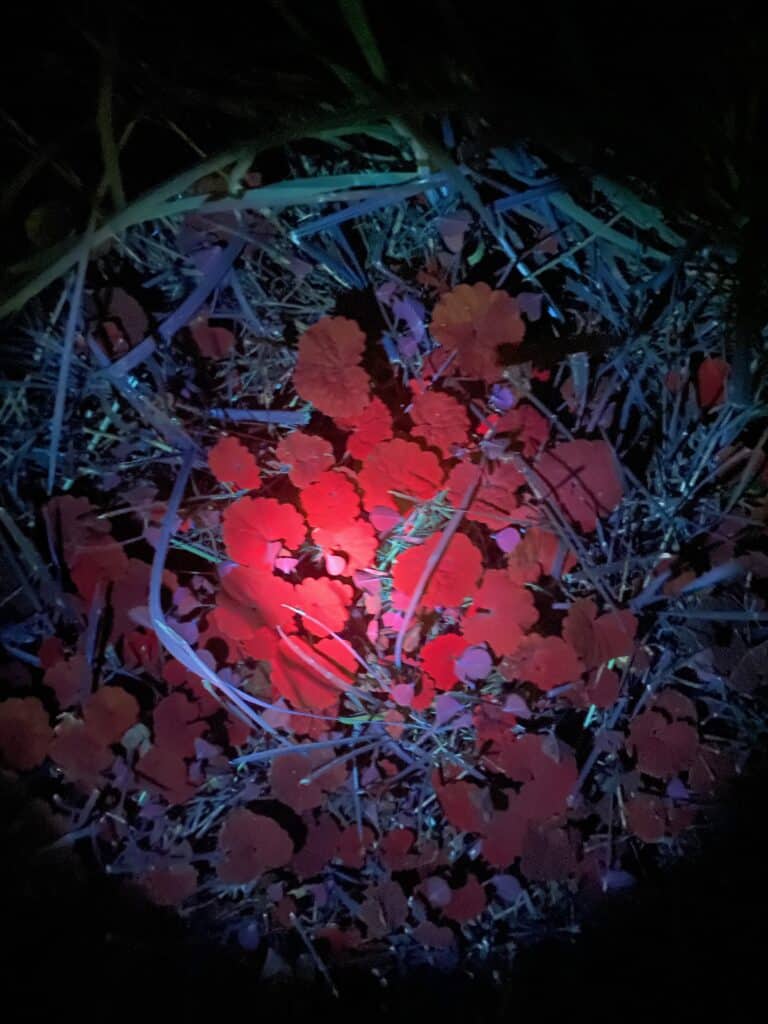
Ground Ivy
She stated, “We were like kids seeing the world with a new view.”
She asked me to pass along this information to my community and so I excitedly went outdoors at night with my own blacklight to see this world.
That first experience was neat but my light was not the right type of blacklight. So I wrote back to Carrie Ann and asked her specifically what light she was using. She replied and I immediately ordered it.*
Turns out there are different types of UV lights and the cheap ones are a different type of UV light which is why I didn’t initially see what she saw. It’s best to get a long range uv light that emits 365 nm.* By having a long range, you can stand back and shine the light on the plant and it won’t interfere if you want to take a photo of the results. It is also great for shining up into the trees that are beyond your immediate reach.
Last night my son and I went out into the dark with the light and our phones and saw an enchanted world! My neighbors probably think we lost our minds as we ran around shining the light on plants, trees, lichens, and fungi then oohed and aahed at the results.
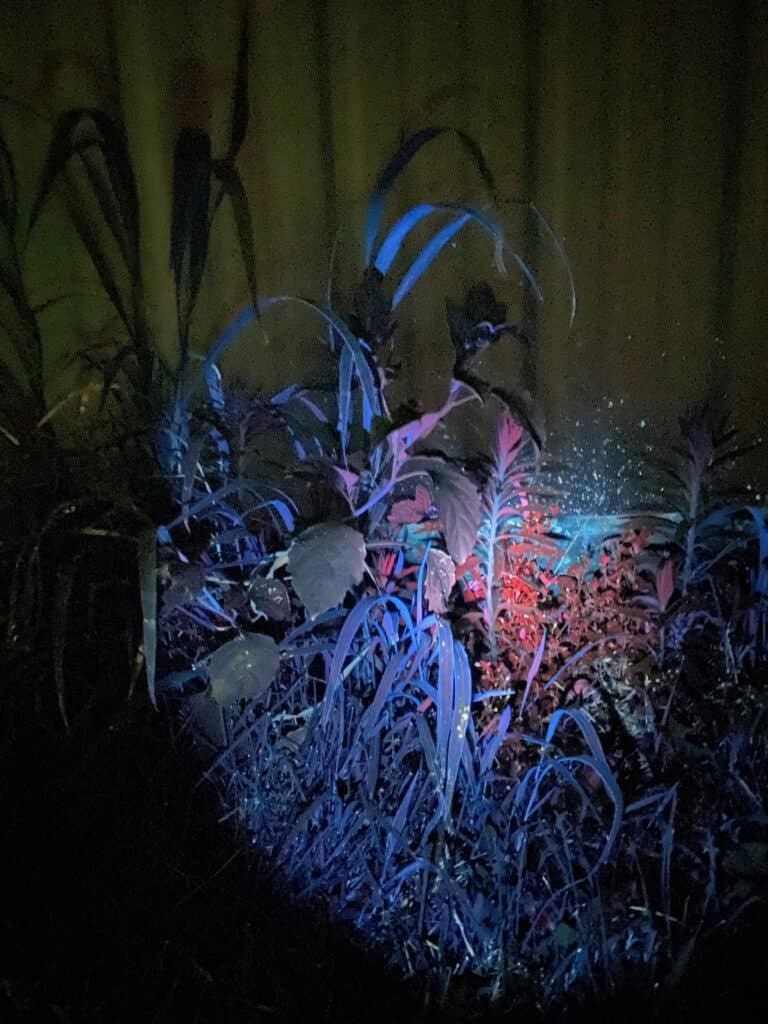
A variety of grasses and Horseweed (red in the center).
This must be what it’s like to be a butterfly or bee flying around in the world! It truly is their world and we are just living in it.
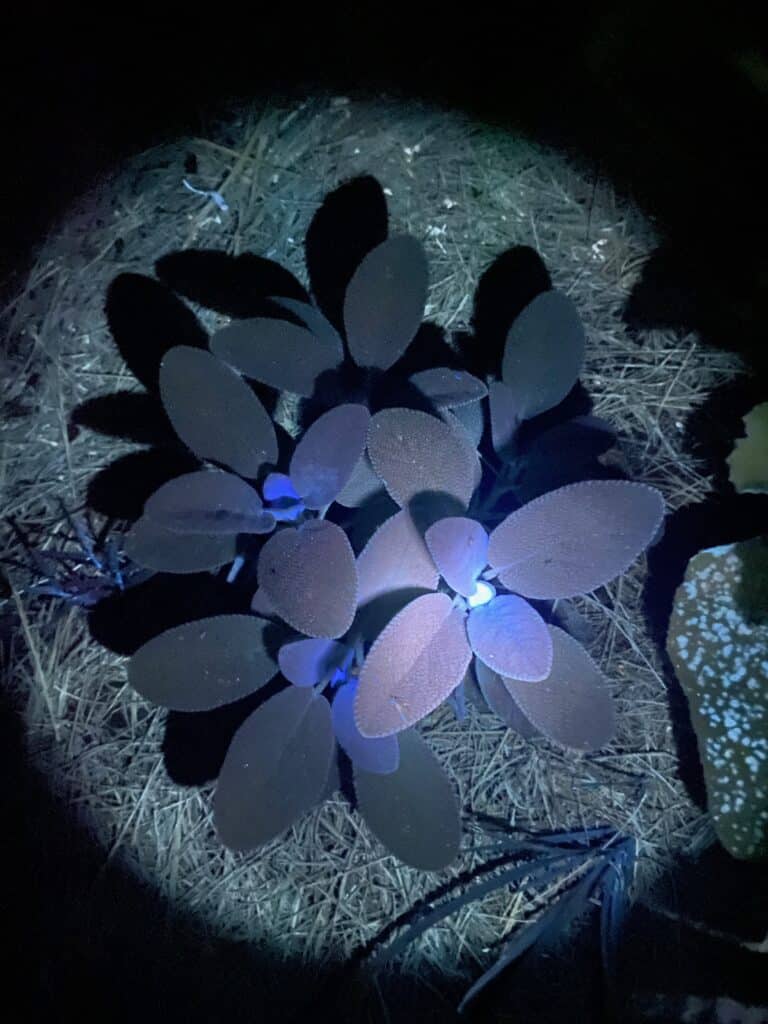
Garden Sage
This is a great way to explore the plants at night and can spur all sorts of questions: what causes some plants to turn red while others turn blue or stay green? Why do some plants stay green on top but red underneath, such as ragweed? Why do Iris leaves turn orange and Ground Ivy turn red? Why is grass blue? Why are some lichens yellow while others are orange and still others green/blue?
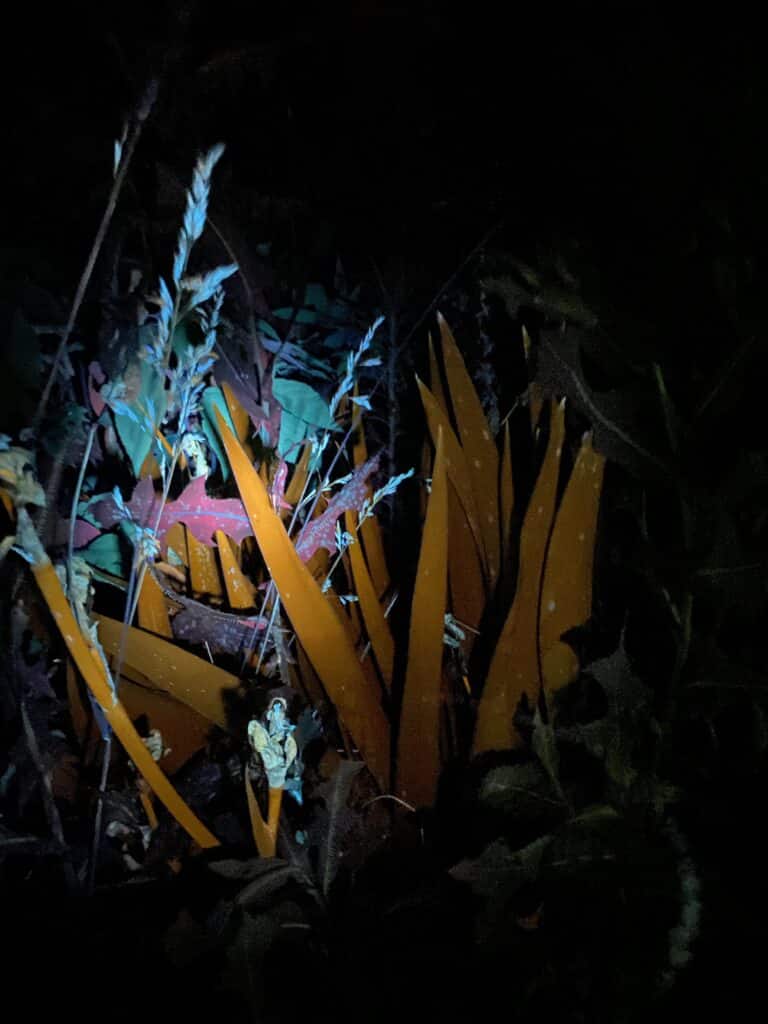
Iris blades, grass seed heads, and Wild Lettuce leaves
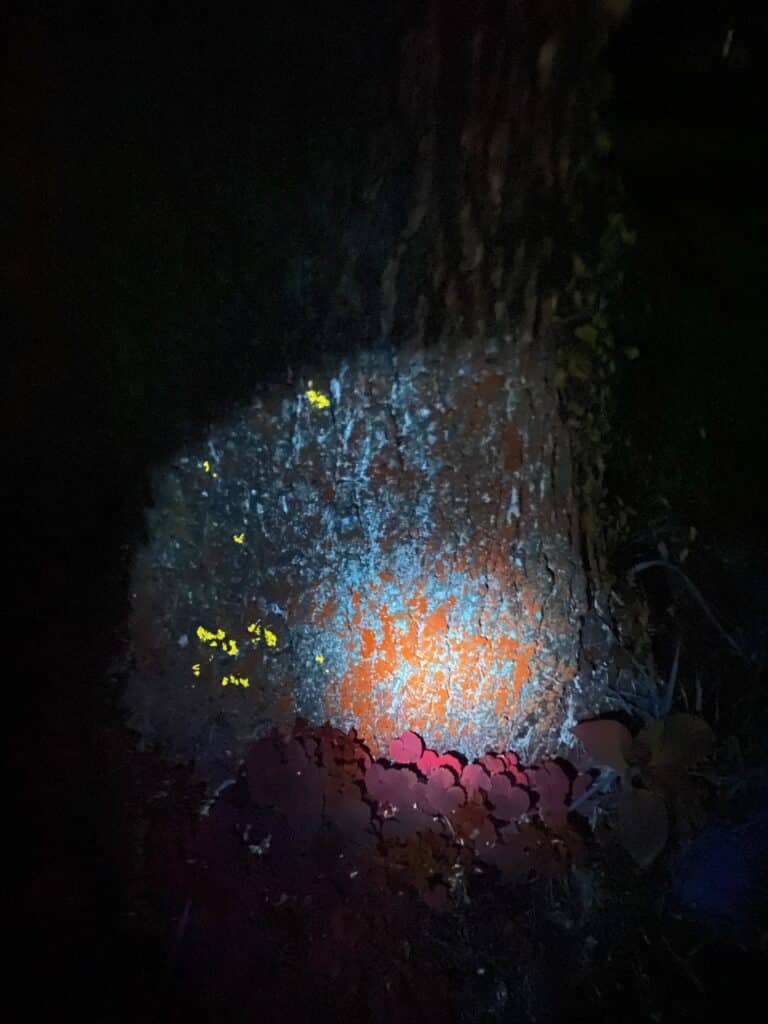
Lichens on a tree with Ground Ivy growing below
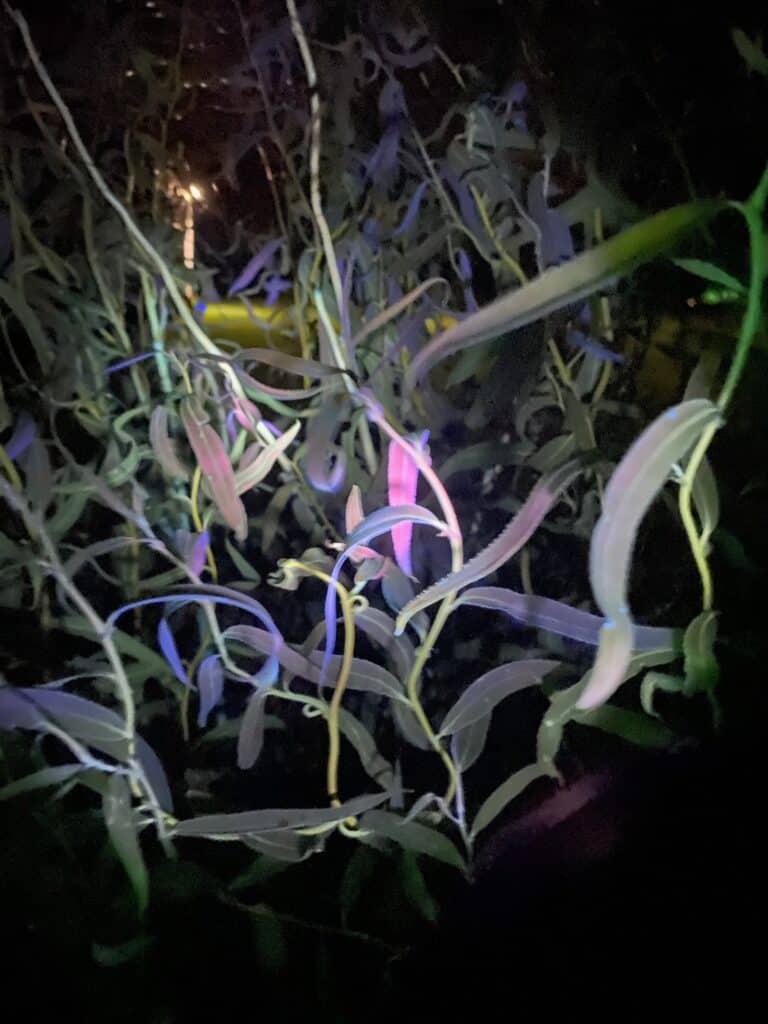
Curly Willow Tree
During the day is a good time to make guesses – what colors do you think the plants will turn under the uv light at night? Then go out at night and take photographs of your discoveries. The next day you can compare your results of what you thought would happen versus what really happened.
The short answer is chlorophyll and other chemicals cause the reaction. Plants that glow a bright red have produced too much and are trying to release it. When my son and I came upon the Rose he was shocked to see the plant’s aura as the red radiated off the plant.
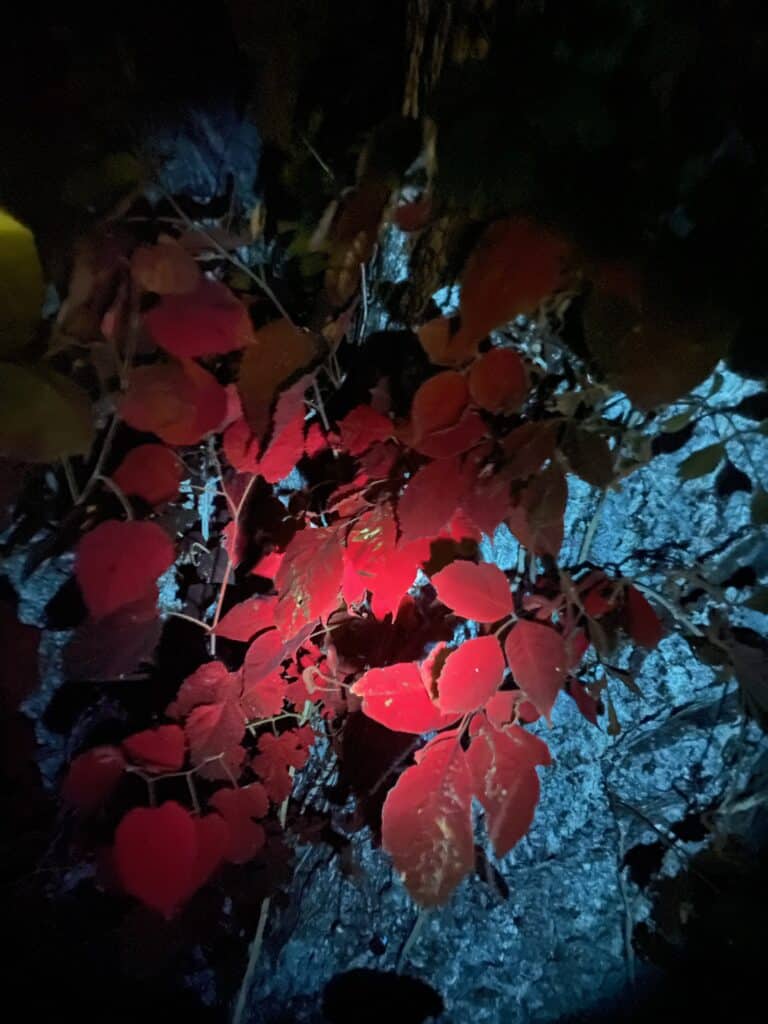
Poison Ivy
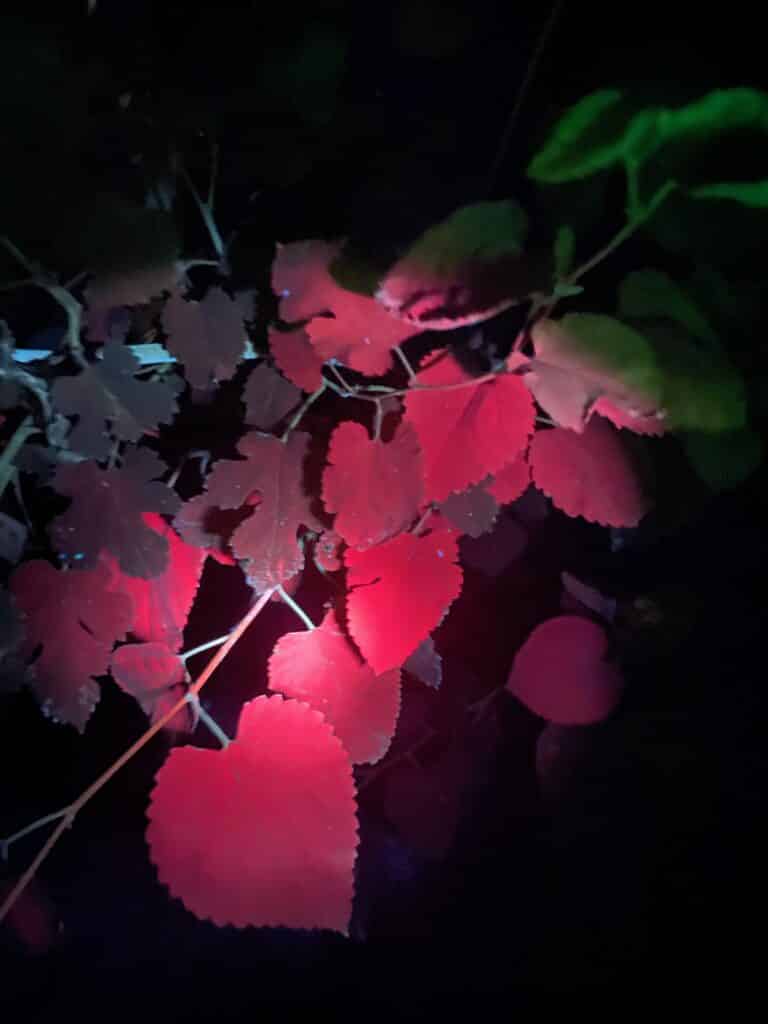
Mulberry
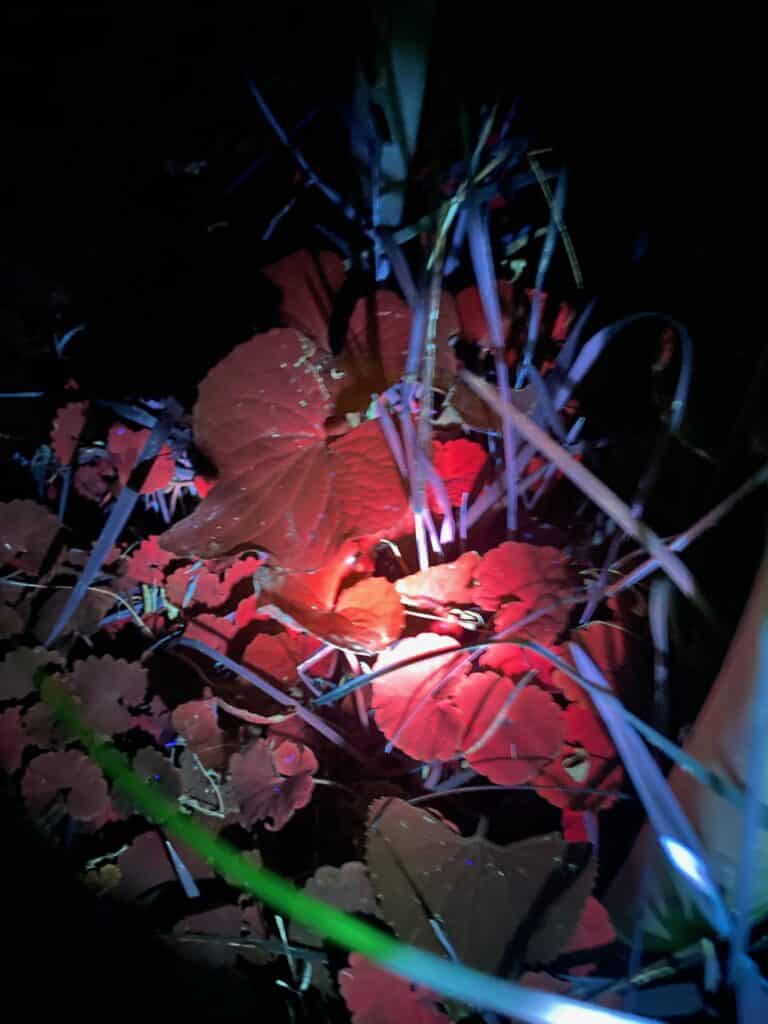
Violets and Ground Ivy in the grass
Young leaves will often glow more brightly than older leaves and we observed that some glow on both the top and bottom while other leaves only glowed red on the bottom and green on the top.
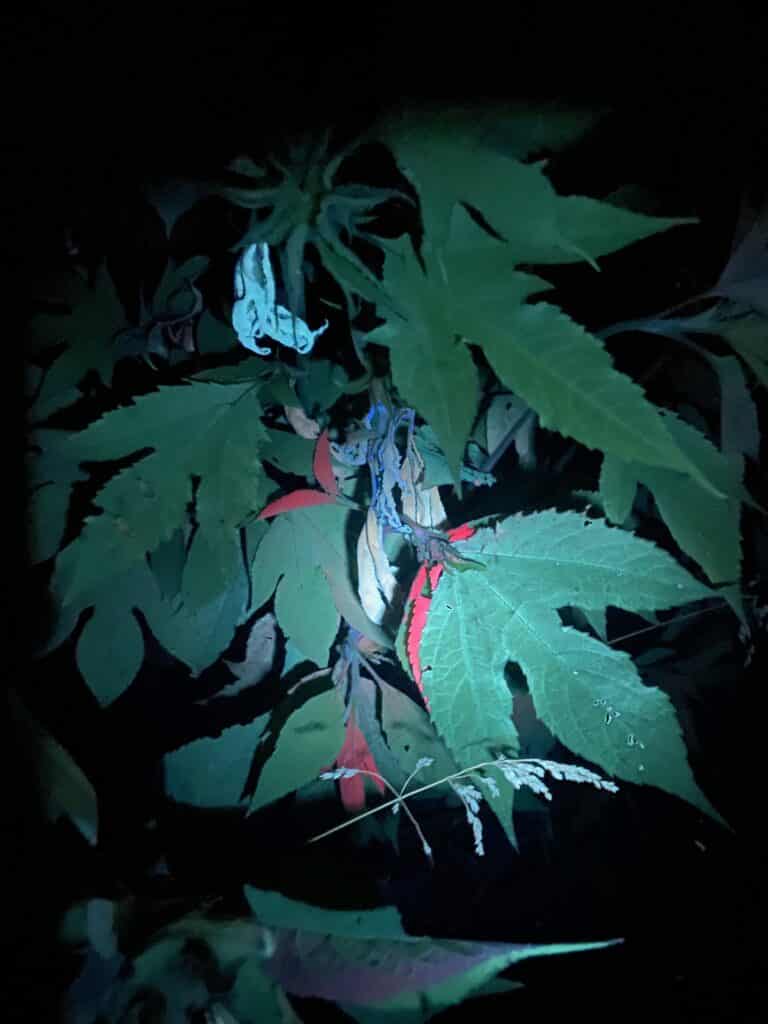
Ragweed
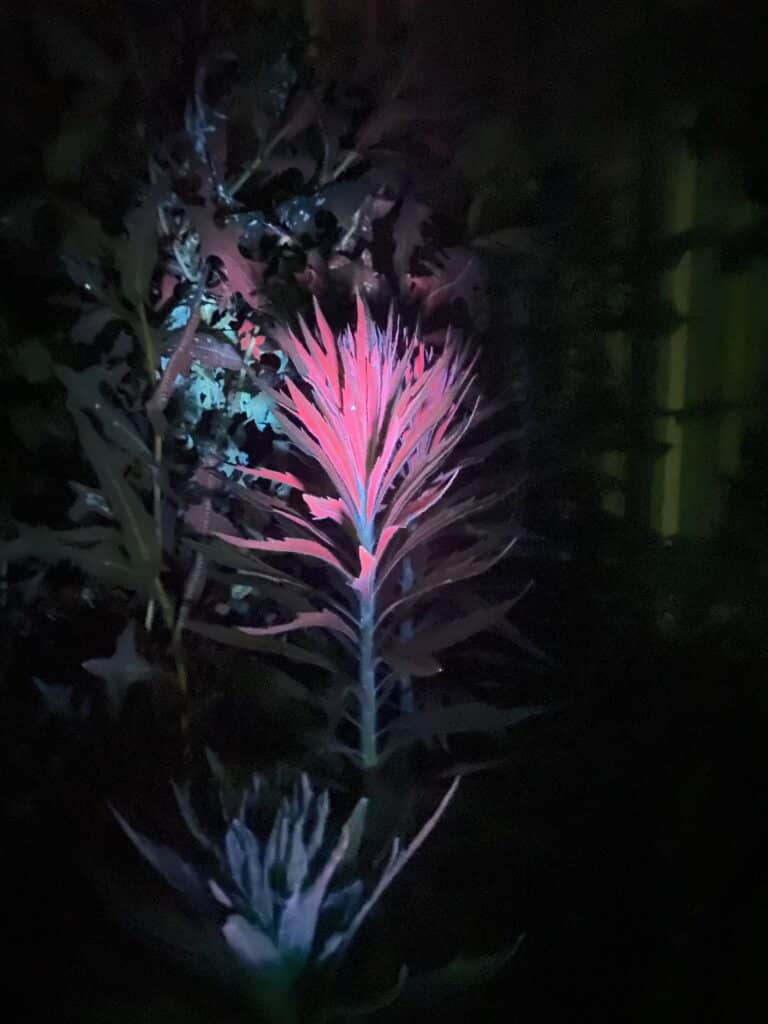
Horseweed
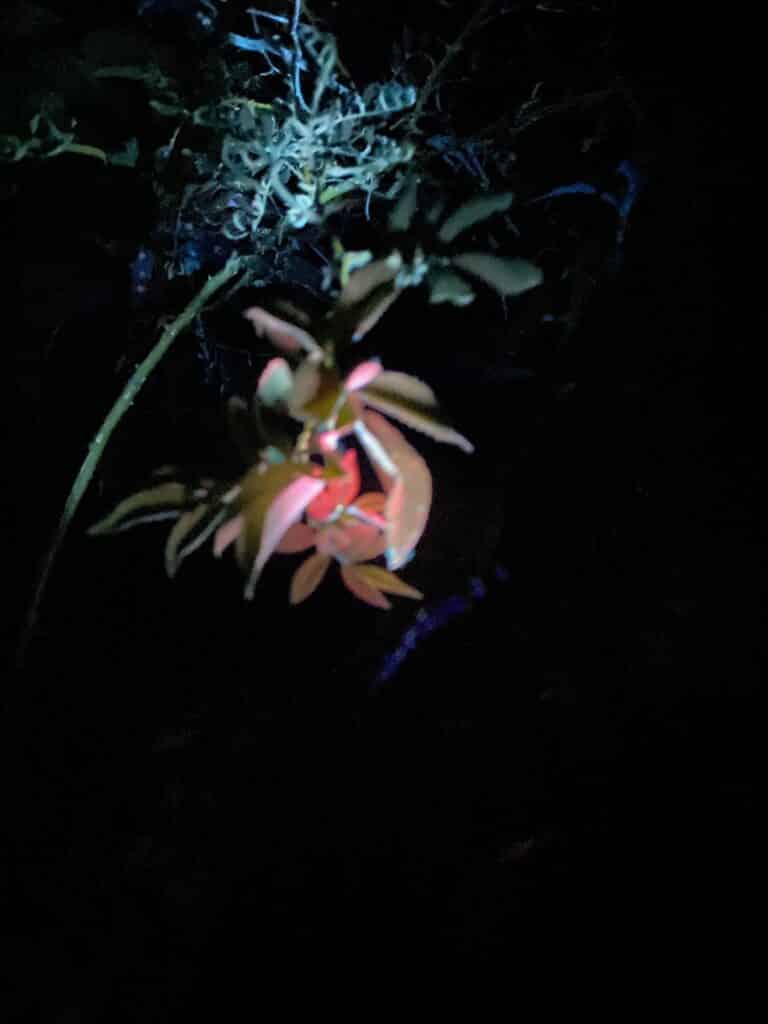
Rose – hard to capture with the camera
Fungi often shed colors of intense greens, yellows, and blues. We found a stump that was loaded with Reishi buds. Most had a pale green glow but one in particular was purple.
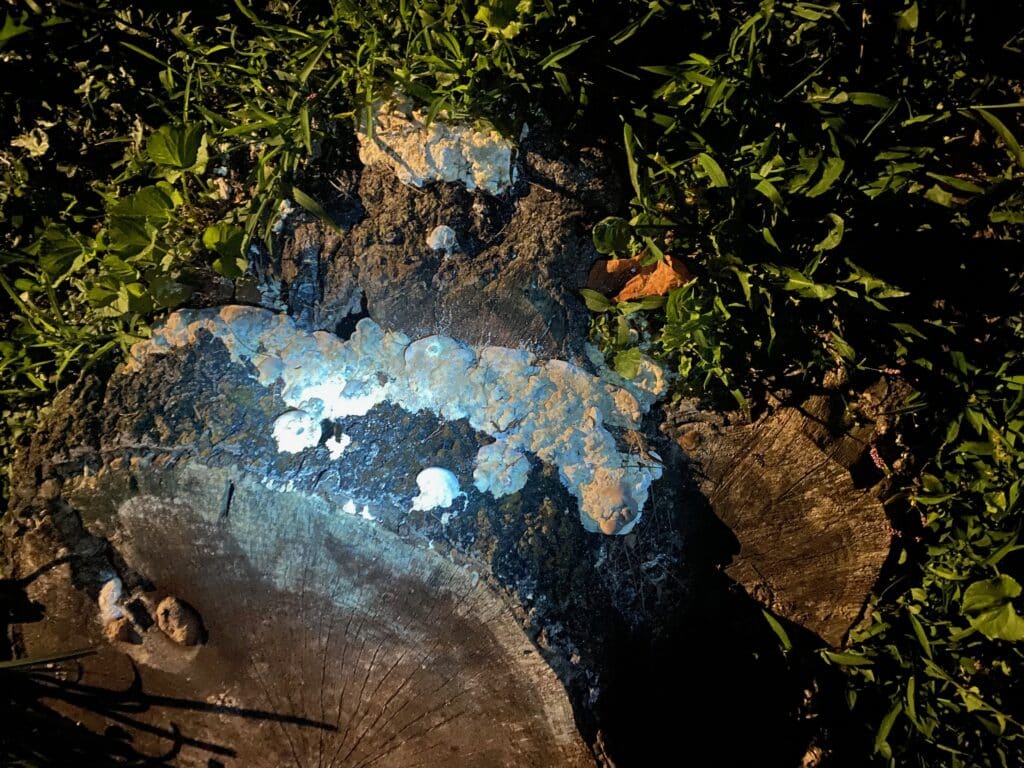
Reishi buds
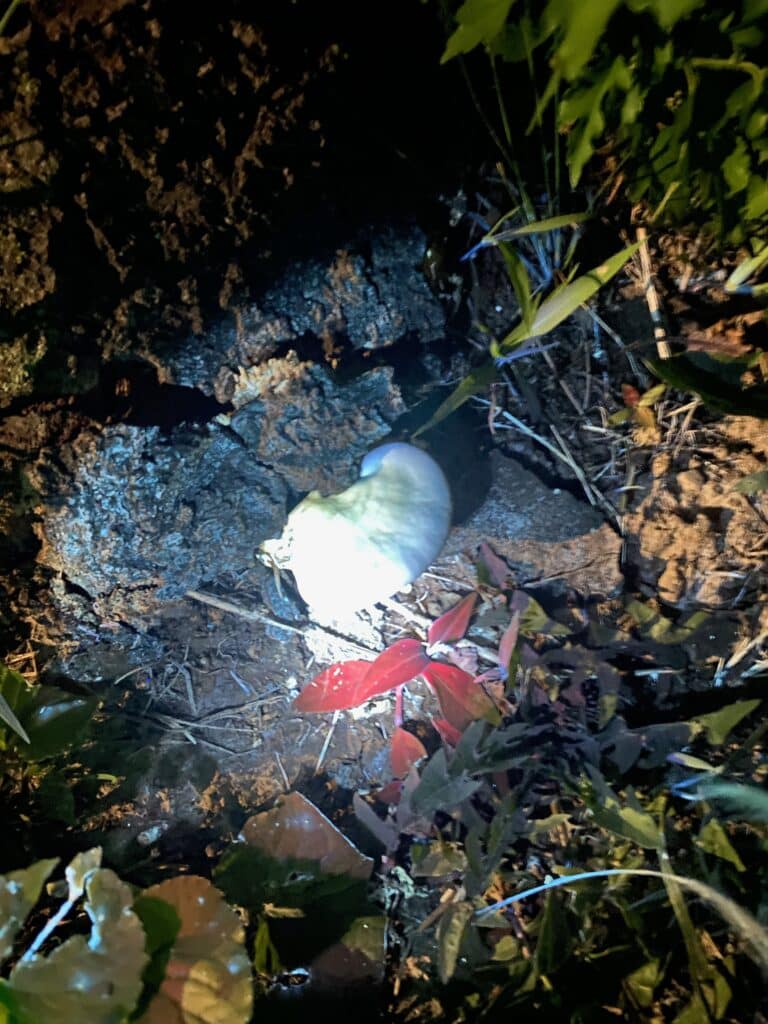
Reishi bud
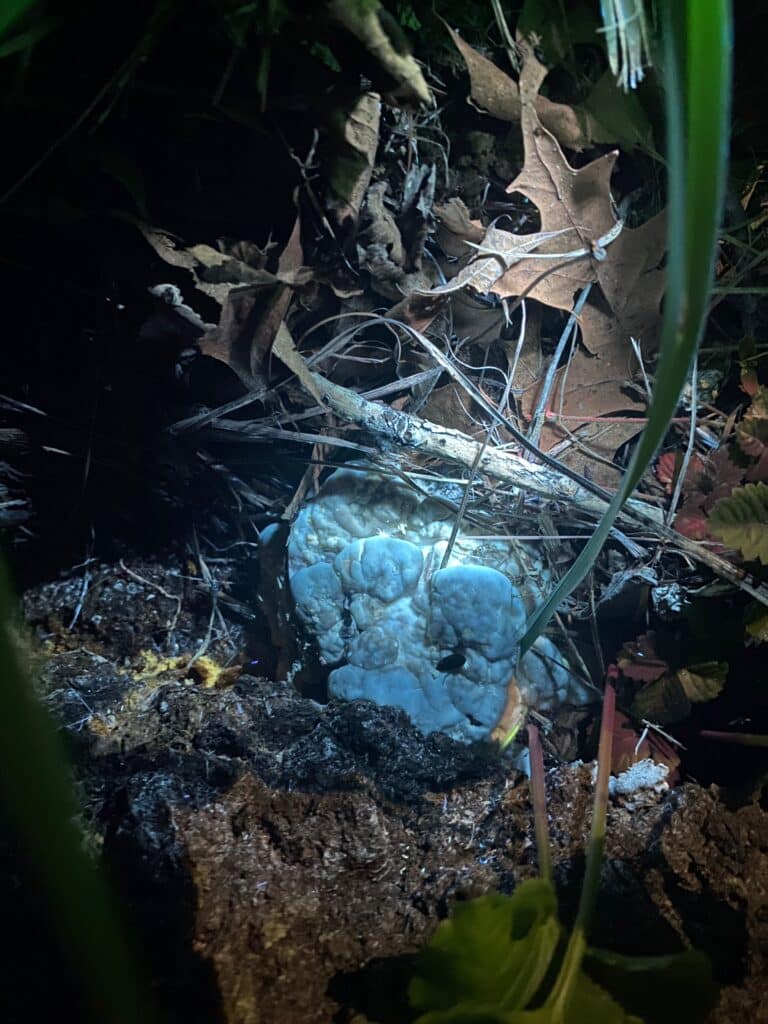
Reishi buds
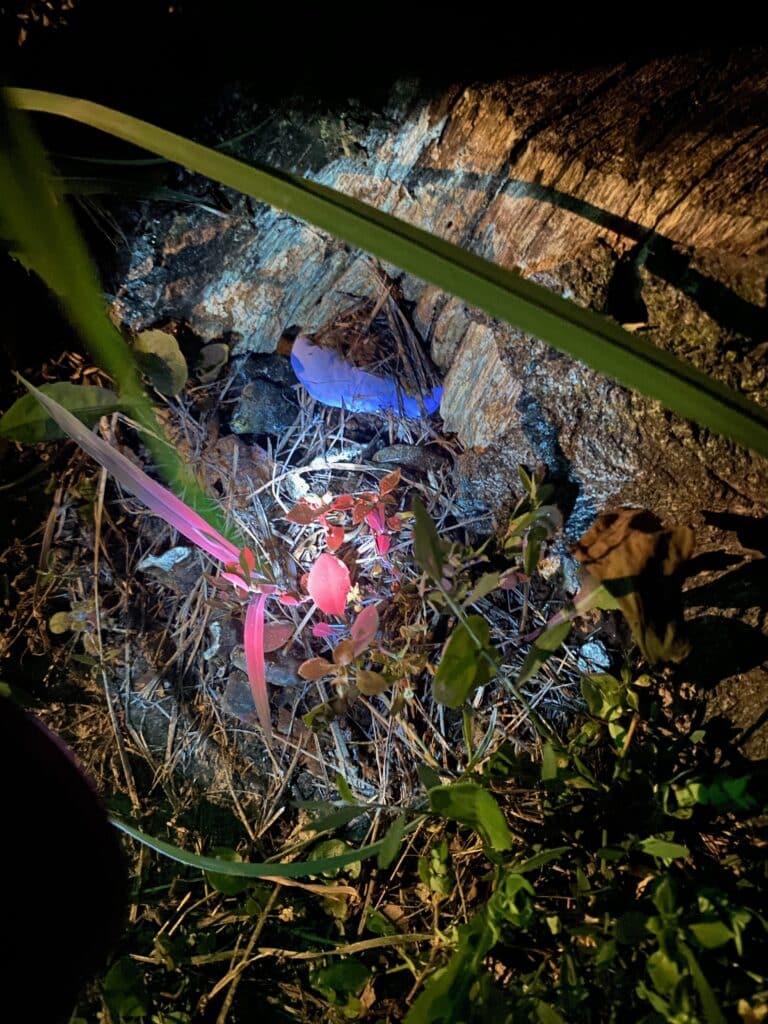
Reishi bud
I found the same thing with a sweet gum ball – most were glowing a pale green but this one in particular (a smaller, younger ball) was a pale purple color.
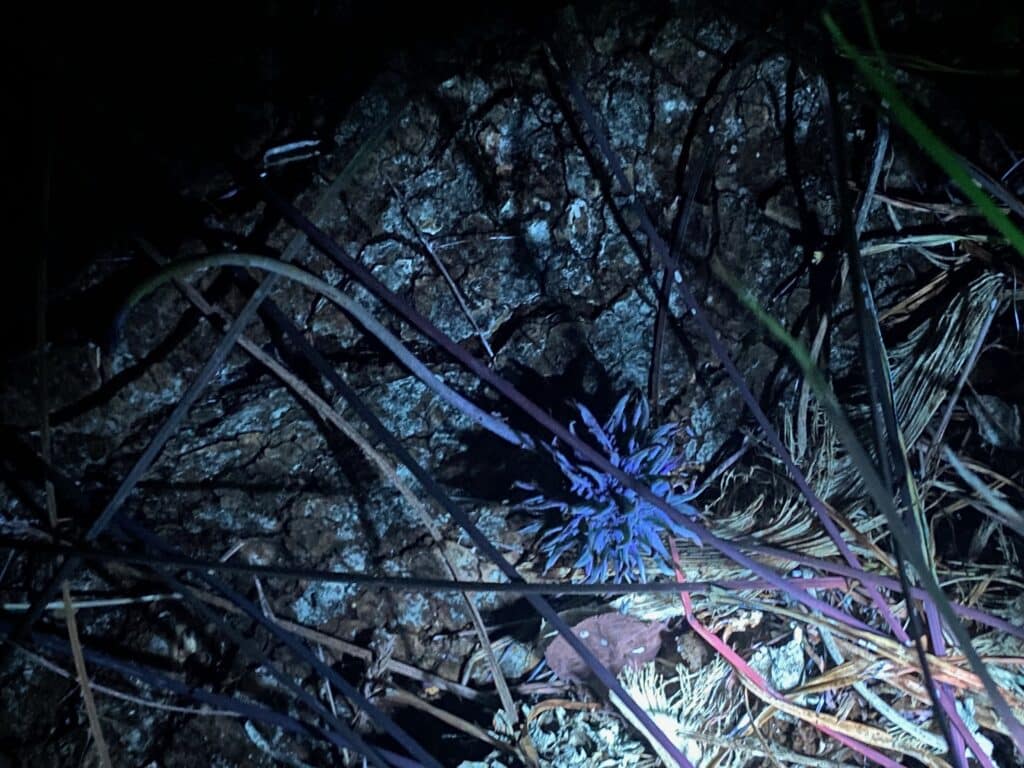
Sweet Gum ball
Looking at a Pine tree, we discovered sap running up and down the length of the tree. It has been struggling for some time as my dad planted it years ago and the humid midwest is not it’s native home (I believe it is a Pine from out west but have not keyed it out). We pruned off a few dead branches this spring and there was some fresh sap/resin dripping from that location. While the majority of the sap glowed a pale yellow, the fresh sap was a bright violet purple.
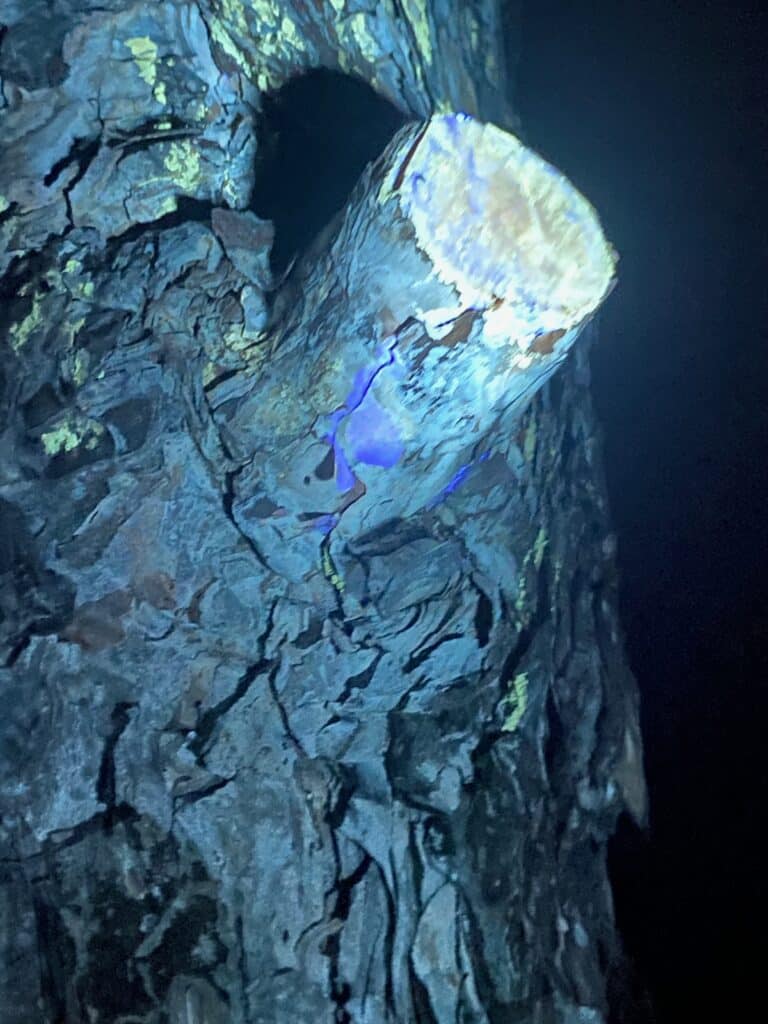
Pine resin both old and fresh
During the hot summer days, you can take the time to dive into the why’s of the fluorescence reactions to the uv light waves from a plant’s ability to shed excess chlorophyll to the plant drawing attention to his would-be pollinators.
It’s also worth noting that the plants can and will change colors throughout the season so this could definitely be turned into a long term project of science exploration. Each child could choose a plant to revisit throughout the year and start a journal of the changes. Observe the plant during the day, then do a night observation. What changes occur that can be connected to the season, the health of the plant, and the lifecycle stage of the plant?
I’m excited to dive into this and come up with some more creative ideas on how to utilize it with plant study and exploration.
*Please note that the Amazon link for the uv light is my affiliate link. If you use that link, I will receive a small amount for the referral at no extra cost to you.